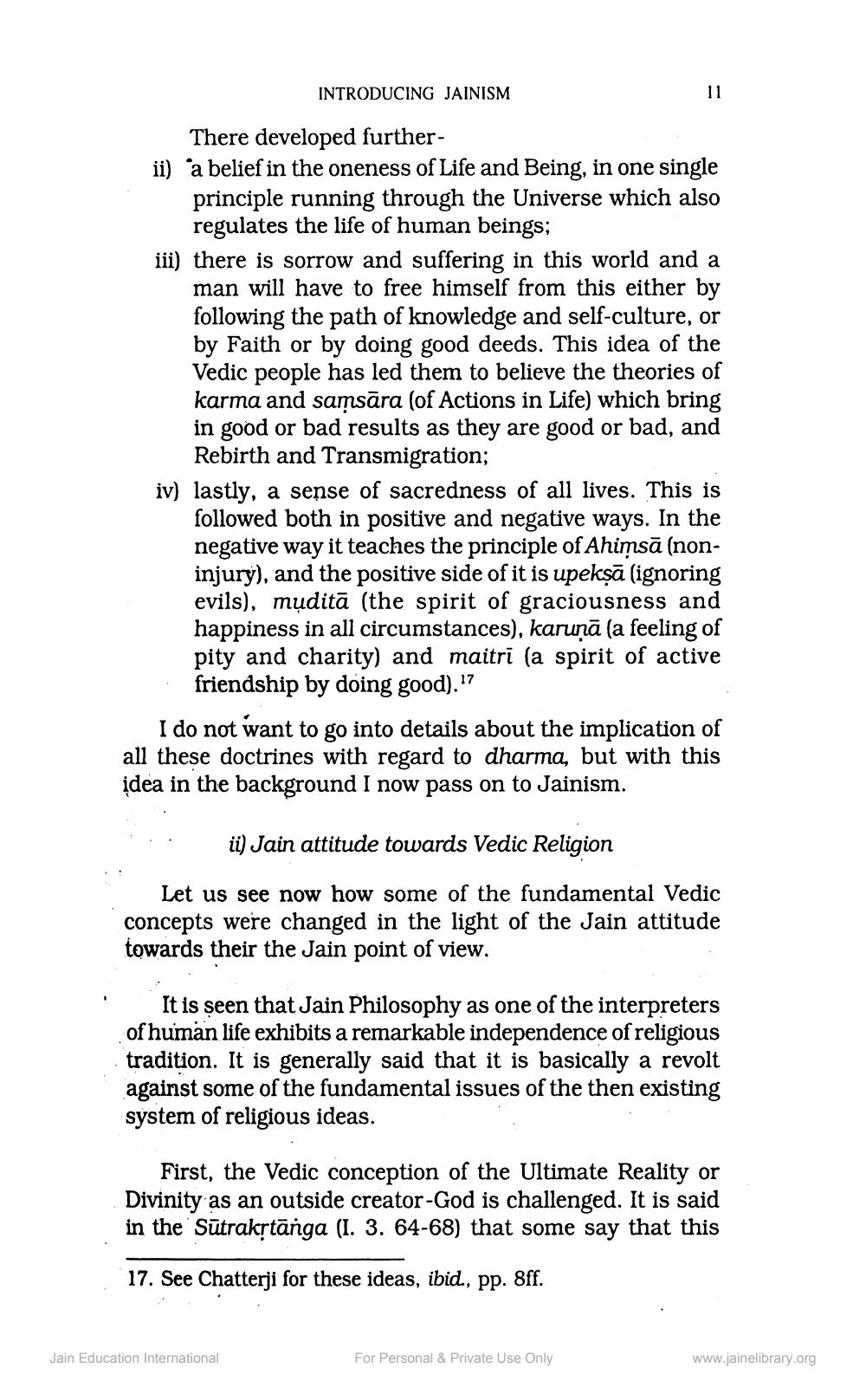________________
INTRODUCING JAINISM
There developed furtherii) a belief in the oneness of Life and Being, in one single
principle running through the Universe which also
regulates the life of human beings; iii) there is sorrow and suffering in this world and a
man will have to free himself from this either by following the path of knowledge and self-culture, or by Faith or by doing good deeds. This idea of the Vedic people has led them to believe the theories of karma and samsāra (of Actions in Life) which bring in good or bad results as they are good or bad, and
Rebirth and Transmigration; iv) lastly, a sense of sacredness of all lives. This is
followed both in positive and negative ways. In the negative way it teaches the principle of Ahimsā (noninjury), and the positive side of it is upekşā (ignoring evils), mụditā (the spirit of graciousness and happiness in all circumstances), karunā (a feeling of pity and charity) and maitri (a spirit of active
friendship by doing good)."? I do not want to go into details about the implication of all these doctrines with regard to dharma, but with this idea in the background I now pass on to Jainism.
ii) Jain attitude towards Vedic Religion
Let us see now how some of the fundamental Vedic concepts were changed in the light of the Jain attitude towards their the Jain point of view.
It is seen that Jain Philosophy as one of the interpreters of human life exhibits a remarkable independence of religious tradition. It is generally said that it is basically a revolt against some of the fundamental issues of the then existing system of religious ideas.
First, the Vedic conception of the Ultimate Reality or Divinity as an outside creator-God is challenged. It is said in the Sūtrakstānga (I. 3. 64-68) that some say that this
17. See Chatterji for these ideas, ibid., pp. 8ff.
Jain Education International
For Personal & Private Use Only
www.jainelibrary.org




